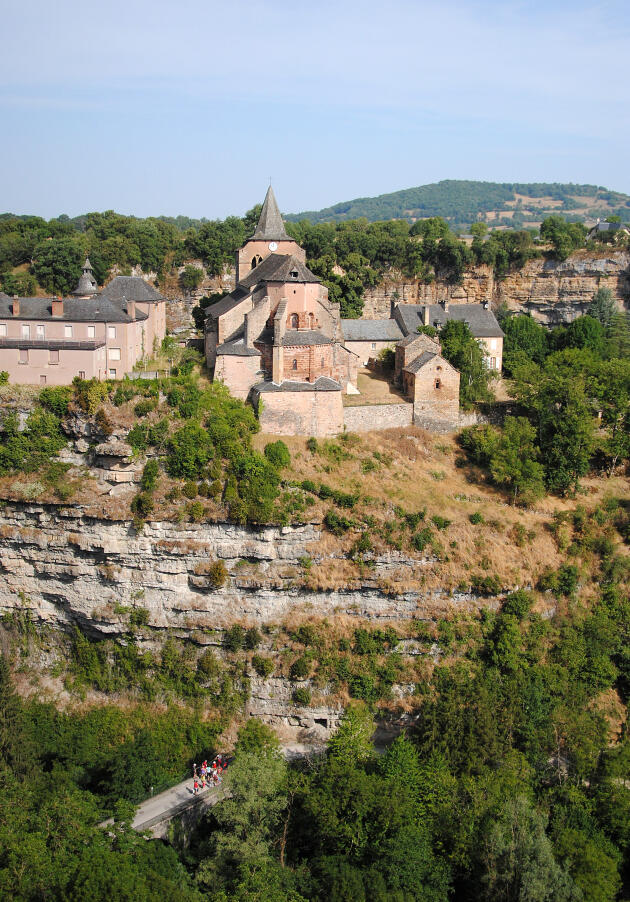“Matthew, where are you parked? », asks Jérôme Doutre, the owner of the La Terrasse café, on the Place de la Mairie. This Sunday, it’s raining heavily, and there aren’t many of them gathered at the counter, where everyone goes with their round of white wine. In Bozouls, a town of 3,000 inhabitants located in the heart of Aveyron, twenty minutes from Rodez, this bar is an institution. Mathieu Causse, a local farmer whose family has always lived on the Bozoulais lands, remembers the time when he arrived there, when he was younger, with friends, on weekends, to party.
At the end of the square, it is the “chasm”or the “city on the edge of the abyss”, as we could read on postcards at the beginning of the last century. We barely dare to bend over. We are on the edge of a precipice whose walls reach 100 meters in height. It’s gripping, dizzying. From this time, a terrace was built on the plateau so that people could experience the void. A century later, this horseshoe-shaped natural cirque, dug into the limestone of the Causse Comtal, has lost none of its spectacular side. Far from there !
On this rainy day, a waterfall appeared on one of the cliffs, which did not seem to disturb the goats, for whom the ledges became a playground. The Dourdou, the river which shaped during For thousands of years this meander has been loaded with red iron, the color of the sandstone which has accumulated on the surrounding causses. On the rocky peninsula, the Romanesque Sainte-Fauste church reflects the little light. So much for the decor.
For history, it is on this spur surrounded by cliffs and easy to defend that the village was first established in the form of an oppidum, today “castle district”, in memory of the structure fortified of which one wall remains, near the church. During the Renaissance, houses were gradually established on the right bank, in the shadow of the two towers marking the entrance to the village, then on the “plateau” (this is the name given to the part of the village located on the natural plateau) at the edge of the abyss, rue de l’Hospitalet and rue du Trou.
From the plateau, the Bozouls hole is impressive. We can guess the layers of time drawn in the wall, we observe what is near and what is far, as a whole. It feels like a microcosm, a world in miniature. The landscape lends itself to painting: houses with golden stones built on the side of a cliff, a fisherman in the river cove, goats on the ledges, a group of walkers, the treetops and the rocky peninsula in the middle of the circus… All seen at a single glance. We find this pictorial composition in the works of the Dutch painter Hans Vleugels (1924-2021), who lived in these lands for a long time.
You have 65% of this article left to read. The rest is reserved for subscribers.
